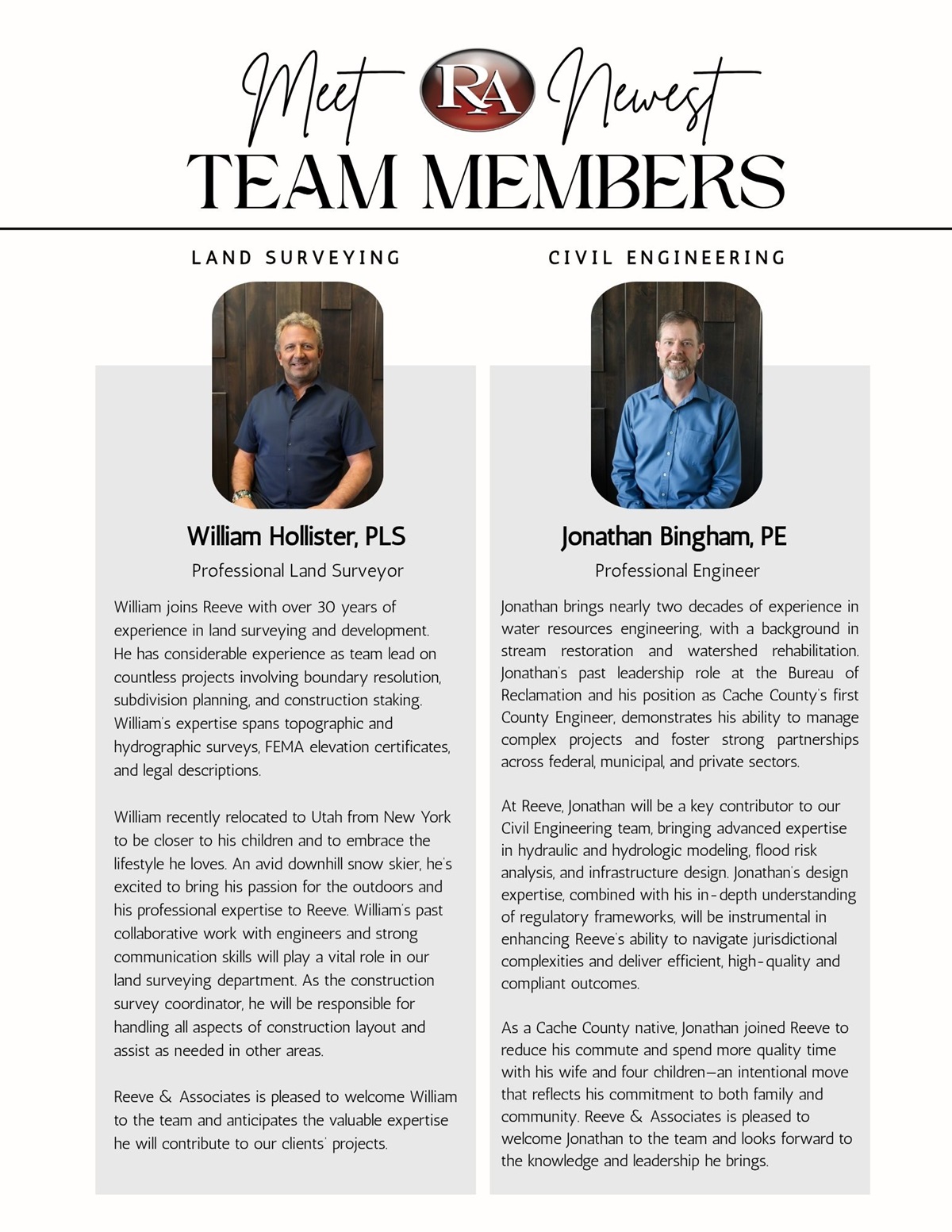News & Resources
Reeve & Associates is now licensed in Missouri, Mississippi, and Arkansas!
The Vital Role of Irrigation Design by Landscape Architects
In the realm of landscape architecture, the significance of irrigation design cannot be overstated. Landscape architects play a crucial role in creating outdoor spaces that not only captivate the eye but also promote sustainability and ecological balance. At the heart of this endeavor lies the meticulous planning and execution of irrigation systems, which form the lifeline of green spaces and ensure the health and vitality of plants, trees, and ecosystems.
Preserving Resources Through Efficient Design: One of the primary objectives of irrigation design is to optimize water usage while minimizing waste. Landscape architects employ a variety of strategies to achieve this goal, starting with the selection of appropriate irrigation technologies and techniques. From drip irrigation systems that deliver water directly to the root zone of plants to smart controllers that adjust watering schedules based on weather conditions, every aspect of the design is geared towards maximizing efficiency and reducing water consumption.
Promoting Plant Health and Growth: A well-designed irrigation system is essential for promoting the health and growth of vegetation within a landscape. By delivering water in precise amounts and at optimal intervals, landscape architects ensure that plants receive the moisture they need to thrive without being overwatered or underwatered. This not only fosters lush and vibrant landscapes but also minimizes the risk of plant stress, disease, and pest infestations.
Creating Resilient Landscapes: In an era marked by climate change and water scarcity, the importance of resilient landscapes cannot be overstated. Irrigation design plays a pivotal role in creating outdoor spaces that can withstand environmental challenges and thrive in the face of adversity. By incorporating drought-tolerant plants, water-efficient irrigation systems, and sustainable design principles, landscape architects can help mitigate the impact of water shortages and create landscapes that are both beautiful and resilient.
Enhancing Environmental Sustainability: Beyond conserving water and promoting plant health, irrigation design also contributes to broader environmental sustainability goals. By reducing runoff, preventing soil erosion, and supporting native plant species, well-designed irrigation systems help preserve local ecosystems and promote biodiversity. Moreover, by utilizing recycled water sources and incorporating green infrastructure elements such as rain gardens and bioswales, landscape architects can further minimize the environmental footprint of their designs and contribute to the overall health of the planet.
In the hands of a skilled landscape architect, irrigation design becomes more than just a technical exercise—it becomes a cornerstone of sustainable and resilient landscape architecture. By prioritizing water efficiency, plant health, and environmental sustainability, landscape architects can create outdoor spaces that not only delight the senses but also serve as models of responsible stewardship of the land. In an age where the health of our planet hangs in the balance, the importance of irrigation design by landscape architects cannot be overlooked.
9 Steps to Winterize Your Lawn
The air is getting cooler and the leaves are starting to fall. This is the perfect time to rehab a tired yard or plant a new one. As the summer months take a heavy toll on your yard, it’s important to repair any damage and prepare for a beautiful yard for the coming spring. Follow these steps to help make your winterizing quick and easy.
- Remove Weeds: Fall is the best time to eliminate weeds like field bindweed. Spray after a killing frost—plants will absorb herbicide into their roots more effectively.
- Rake Leaves: Raking helps remove debris and allows water and nutrients to reach the roots of your grass.
- Fertilize Your Lawn: Apply a winter fertilizer to strengthen cool-season grasses like fescue, bluegrass, and rye.
- Spread Grass Seed: Seed patchy areas while temperatures are between 60–70°F to ensure strong spring growth and weed resistance.
- Plant Trees, Shrubs, and Perennials: Fall offers ideal conditions for root establishment—and end-of-season sales!
- Avoid Pruning: Pruning now can trigger vulnerable new growth. Wait until winter is over.
- Mow Your Lawn Shorter: Continue mowing until the first frost. Lower the blade to about 2"–2½" for the final mow.
- Aerate Your Lawn: Aerating improves root access to nutrients and reduces soil compaction and thatch buildup.
- Drain Irrigation Pipes: Shut off the water and drain lines using manual valves, automatic valves, or the blow-out method to avoid freeze damage.
What is the difference between Retention and Detention?
Retention basins and detention basins are both stormwater management structures designed to control and manage the flow of stormwater runoff, but they serve difference.
Retention Basin:
- Purpose: The primary goal of a retention basin is to retain and permanently store stormwater runoff. It allows water to accumulate and remain on the site, promoting groundwater recharge and preventing downstream flooding.
- Design: Retention basins are typically designed with a larger storage capacity and are often landscaped with vegetation. They may have a permanent pool of water, providing habitat for aquatic life.
- Long-Term Storage: Water stored in a retention basin is intended to be held for an extended period, allowing for natural processes like infiltration and evaporation to occur.
Detention Basin:
- Purpose: A detention basin, on the other hand, is designed to temporarily detain stormwater runoff and then release it at a controlled rate. The primary purpose is to manage peak flow rates, reduce downstream erosion, and control flooding.
- Design: Detention basins are engineered with a focus on rapid drainage, often featuring outlets or control structures to regulate the discharge of water. They are usually dry between storm events.
- Temporary Storage: Water is detained for a short duration, typically until the peak of the storm has passed. After detention, the basin is designed to release water gradually to prevent overwhelming downstream infrastructure.
While both retention and detention basins play roles in stormwater management, retention basins store water for the long term, promoting natural processes, while detention basins temporarily hold and release stormwater to control peak flows and protect downstream areas.
What is an ALTA Survey?
“ALTA” stands for American Land Title Association. An ALTA Survey is a land parcel map that is a combination of a boundary survey, title survey, and location survey prepared by a licensed land surveyor. The map depicts existing improvements, utilities, substantial site observations, delineates or notes easements and exceptions cited within the title commitment. Some surveys may also show topographic data, zoning, and flood zone restrictions. An ALTA is drawn in accordance with “ALTA” specifications. The ALTA standards governing the content of all ALTA surveys and are denoted in the Minimum Standard Detail Requirements for ALTA/NSPS Land Title Surveys, as adopted by American Land Title Association and National Society of Professional Surveyors.
Why do I need an ALTA?
The purpose of a land survey is to issue title or mortgage insurance for real estate transactions. Preparing an ALTA survey can be essential for an owner and lender to ensure the land is able to proceed with little to no issues regarding the acquisition or loan. Although an ALTA may not always be required in all land acquisitions, it is our professional opinion to have one prepared because it can identify and locate in-depth information regarding the surveyed property.
Listed below are just few of the items that can be referenced on the map:What is the difference between a Boundary Survey and an ALTA Survey?
There are many types of surveys used when assessing a parcel of land. Among the most common are ALTA/NSPS surveys, called ALTA surveys for short. These surveys differ from more basic surveys in that they must provide highly specific information in accordance with strict standards. When deciding on the type of survey you need for your parcel of land, it helps to know the difference between ALTA surveys and regular border surveys.

